***Warning: This is a pretty graphic post about how to butcher a chicken, complete with pictures and lots of description. My intent is to help people who are preparing to butcher their first bird.***
On a recent Sunday morning, a local Eugene friend invited people over to learn how to properly kill and butcher chickens. She raises broilers every summer in her urban backyard, feeding them organic food and letting them free-range under the blue sky. These guys fill her freezer and provide her with meat for the year. Although I have killed a couple chickens before, I was curious to see the “proper” way to do it.
Broilers have been breed over the years to be rather dumb and gain weight incredibly quickly. By the time they are only 8-12 weeks old, they need to be butchered lest they eat themselves so fat that they can’t walk or have a heart attack. The chickens we butchered were actually roosters, but the meat from broilers tastes the same really. This is not the case for egg-layers, whose roosters taste tough and lean.
When you catch a chicken, it is important to make sure your hands are covering their wings to prevent them from flapping out of your hands. Once caught, hold them snugly to your body. I think most animals get a calm feeling when they are held snugly. Perhaps it’s the heart beat they hear or maybe it’s just comforting for other reasons. I ended up doing a lot of the killing because I was pretty good at the catching without causing the birds to really freak out.
The birds are held by their feet, then gently turned upside down. Chickens get disoriented when they are upside down and after a few seconds they become very calm, their wings kind of relax out. After they become disoriented, we slid them down into a small construction cone with the top cut off and a bucket down below.
One person held their feet at the top and the other person (often me) took a knife and slit their throat. I covered their face when I did it, to continue to keep them as unaware of things as possible. They bleed to death from there, which I am told is one of the most humane ways to die – the blood rushes out of your body as you pass out. There is usually some twitching at this point, even though the bird is dead quite quickly, as the body shuts down and nerves react. The blood streams down into the bucket below the cone.
Once the bird is done bleeding, the head comes off and they are plunged into a very large pot of water that is about 140 degrees in temperature. The bird is submerged for about ten seconds, which loosens the feathers without cooking the bird. The bird is then defeathered, starting with the wings and tail feathers which are the hardest to remove. The other feathers should come out pretty easily by just wiping them off. If they are not coming out easily, the bird needs to go back in the water for a few more seconds.
There was a separate station for working on the inside of the bird. It is good to keep these as two separate areas to ensure everything stays clean.
With the chicken on its back and using a sharp knife, cut down the neck until you find two tubes. One will resemble a vacuum cleaner hose, which is the esophagus. Cut this off as far down as you can and discard. The second tube will be the one leading to the crop.
My friend didn’t feed the birds the day before, which meant cleaning the crop would be less messy. Follow the crop tube down until you find the attached bag, which is the crop (pictured below). Pull this out as far as possible, cut and discard.
Turn the bird around, still on its back, and begin the cleaning. Start by cutting a “Y”, which means a straight line from the bottom of the breast bone, about two inches. Then cut to either side at a diagonal down to either side of the tail. Make sure you only cut deep enough to pierce the skin. The intestines are right under your knife and you really, really want to avoid cutting those open.
With your knife angled almost straight down, cut a horizontal slit right below the anus along the tail, connecting to the two end points of your “Y”. In the picture below, the person was holding the knife to demonstrate where we would be cutting.
You have now cut straight down a few inches, along either side of the body cavity, and then along the underside of the anus. You should be able to now gently pull the anus out, which will also pull the intestines and such out.
Once you have some guts pulled out, put your hand inside the bird. Using the side of your hand like a spatula, move along in internal body cavity to loosen any guts from the walls. This should help you gently pull everything out. Be very gentle with the galbladder, which will be an almost black organ with a texture similar to the intestines. This is the absolute worst thing to puncture, as it holds all the bile and super gross stuff.
You may choose to keep the heart and liver as you clean the bird. Plunge those into cold water if that is the case.
Once cleaned, the bird needs to be rinsed with a hose and plunged into ice cold water for it to cool quickly.
On average, the eight week old roosters weighed around 5 1/2-6 pounds. My friend was sweet enough to send me home with a bird to eat and chicken feet for our dogs to enjoy. The feet are also good when making chicken stock, but unfortunately we just don’t have the freezer room right now.
Maybe it’s because I have killed a couple chickens before, or maybe because I am really aware already that something died to become my dinner, but I didn’t leave feeling sad or disturbed. These birds are breed for one purpose: meat. And I feel like the ones I handled were pretty calm and died very quickly. It makes me happy to know they saw sunshine and ate worms in the green grass before their time was up – something most chickens that end up as dinner never experience.
I know not everyone will agree, and I hope that means they are vegetarian! It is a process I think every meat-eater should experience at some point in their lives. In the end, it makes us more grateful when we sit down to enjoy a cider-braised chicken for dinner.
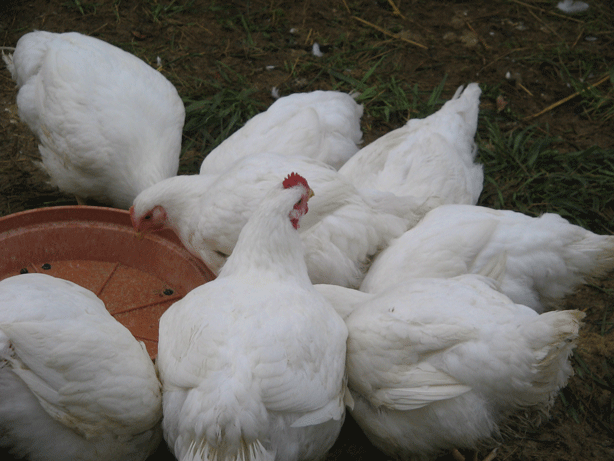
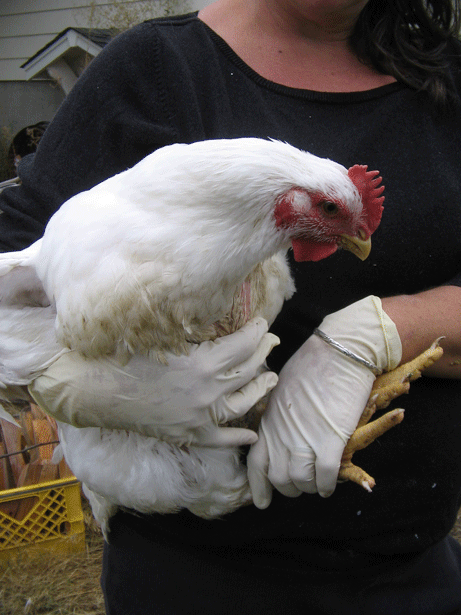
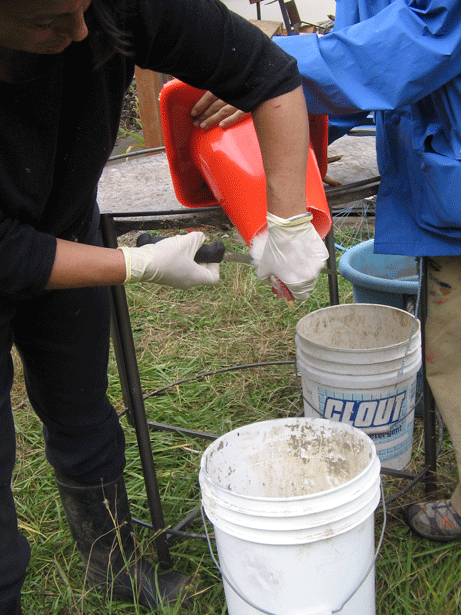
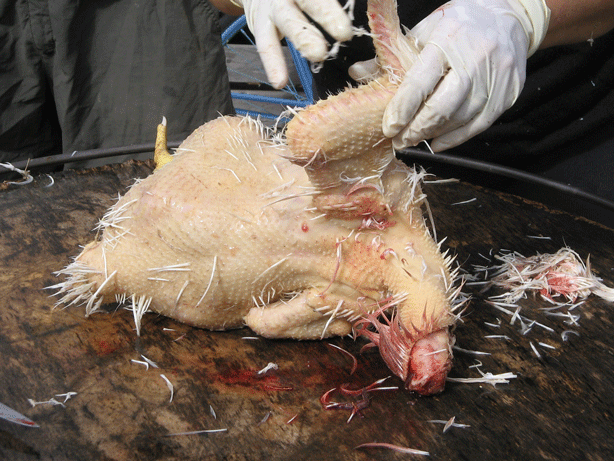
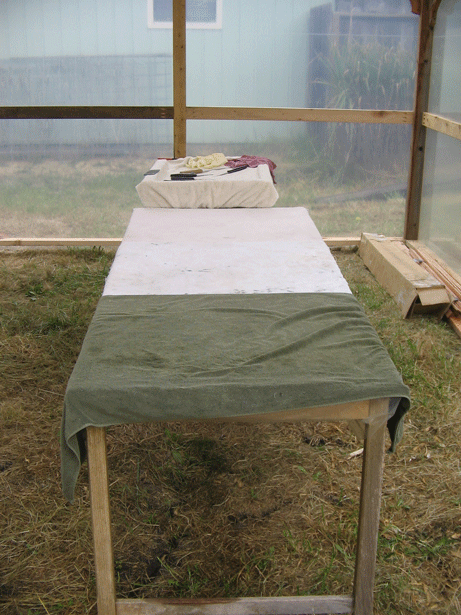
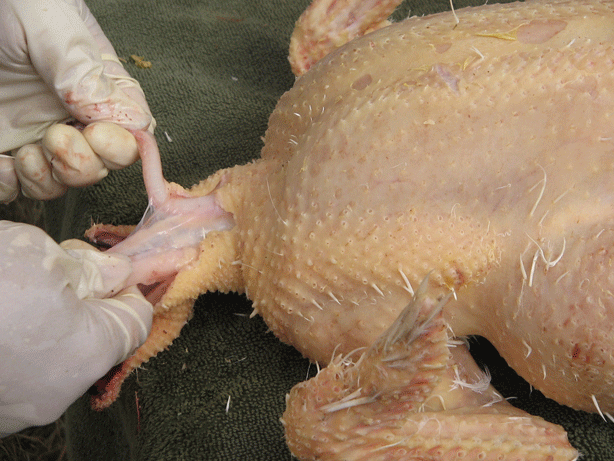
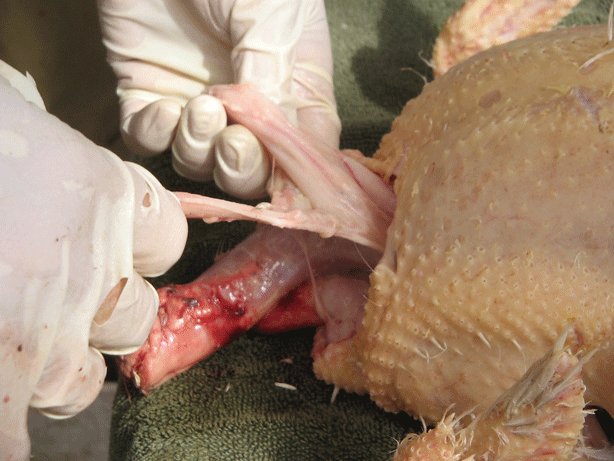
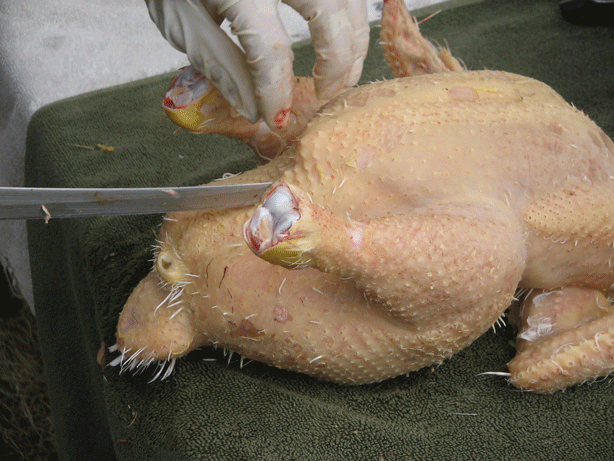
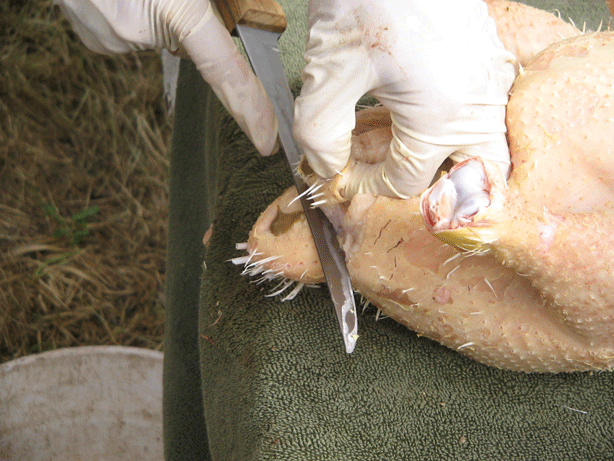
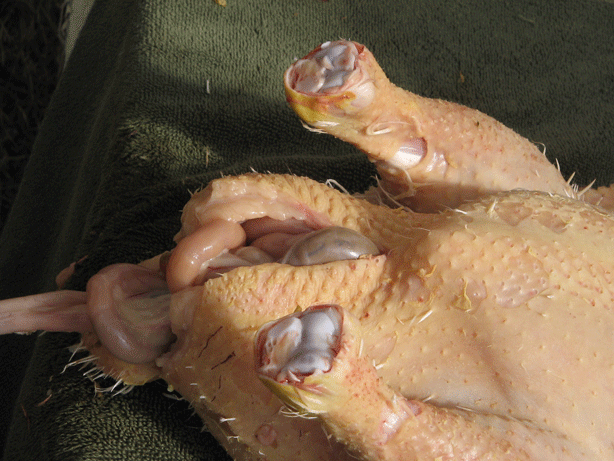
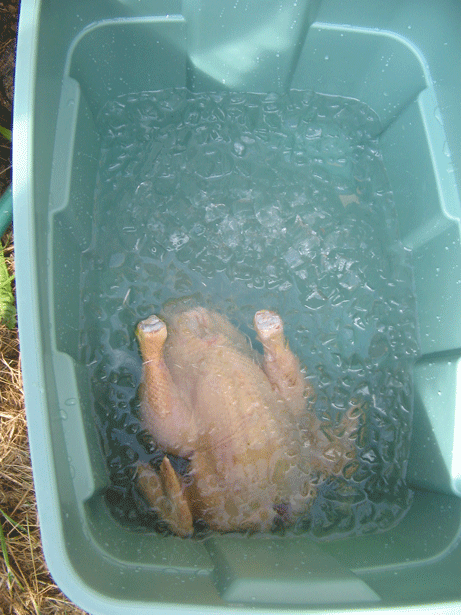
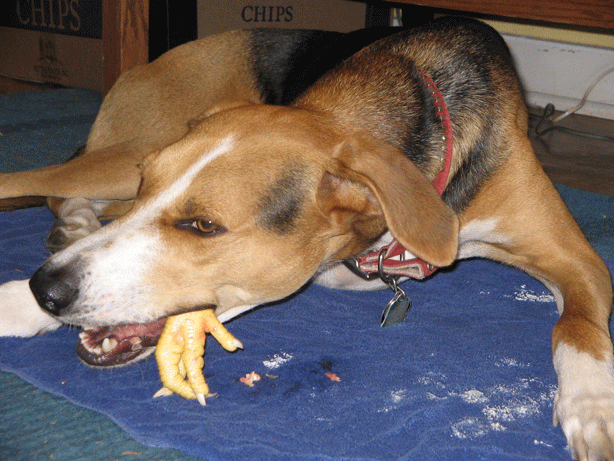



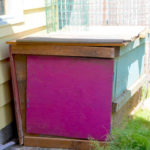

 This has become my
This has become my
 This is from South
This is from South


 All the ornamental grasses get cu
All the ornamental grasses get cu



Thanks for the excellent post. I’m seeing more and more posts like this and am glad for it. Not everyone has to agree, but if you eat meat, you must not be divorced about how it gets to be on your table. KUDOS to you!
I think every kid in the nation should have to work on a farm/ranch for one month, shoveling manure and preparing supper, [killing chickens] in order to graduate from high school. How did we ever become so squeamish?
Thanks for the detailed post about killing the chicken. I have chosen to be an omnivore and have contemplated whether I could ever do this myself as a true test of my meat-eating nature. Although I have not killed a chicken, I have concluded that I could, especially if I had not eaten meat for a while. It was nice to see the process described. Your simple killing of a bird to eat was not really disturbing at all — much unlike the horrible films I have seen from inside slaughter houses where mass mechanized killing takes place. I hope no one gives you grief about publishing this information and photos. I’m sure many internet searchers will find your post very useful.
thankyou very much for the description and some very good ideas. i have started breeding poultry for the table, given the economic climate, and although have killed poultry before was a very long time ago. i thought you had some very good ideas and the cone worked well. i will use your info in my next killing venture. thankyou anymore great ideas would be welcomel. cheers
This is a great post. You described the process so well.
I’ve raised chickens for myself for a few seasons now and I’m becoming a little “evangelical” about it. It’s a very engaging and enlightening process.
I like the use of the traffic cone; the ones for sale by farm-supply places can be pretty pricey.
I just discovered your blog and I’m enjoying reading about your adventures in taking responsibility for your food production.
Can you discuss cutting off the chicken feet? How did you do it so neatly?
Catherine, I just felt for the joint between the leg and foot, then cut there through the cartilage. Hope that helps.
Everyone else, glad you are finding this useful! That is certainly the intent, not just to make people squeamish
What a great post – we have layers that we got this summer but I am considering getting some meat birds next summer as well. I’ve wondered just what “the deed” would look like and you helped put my mind at ease. When will we see the meat rabbit post?
I can remember when my dad killed a few chickens in our backyard and yes, the dumplins were great! As an adult, I later too killed a few chickens and yes, more chicken n dumplins.
Does anyone here have experience with heirloom chicken breeds? I have heard that it is a great way to have both egg layers and meat chickens, but I have personally never tried it. Thanks for the post! I have been planning on giving this a try next spring, but it isn’t something I just wanted to figure out by myself.
thanks. I have to ‘do the deed’ for the first time tomorrow, and want to do it cleanly, quickly and humanly for my ‘girls’. this will be the first time I have had to cull them, but they are getting on, no longer lay, and one is seemly a little sick the last few days. Don’t think I will bring myself to pluck and cook them, but a hole has been dug, and I will be planting a fruit tree over them.
Thanks for the wonderful post! As a child, I would help catch the chickens while others would wring their necks before cutting them to bleed them out, then it was back to us kids to defeather them… Years later I consider raising my own urban chickens, for the safety of knowing what they have been fed. Thanks for your post!
Thanks, this was helpful. I have to do our chickens right after Thanksgiving and I have never done it. Although I have dressed deer, never birds. I like not having to cut off their heads. Less messy. Thanks again
Glad you guys are finding this post so helpful! It definitely stinks to miss or not chop all the way thru when you go the ax route. Best of luck to everyone doing the deed.
Thanks for taking pictures and being detailed. My dad and I are going to butcher chickens for the first time and this really helped us alot
I am ashamed to say that this post did make me feel a little sick, but I am glad I read it. I agree meat eater should have to do this at some point. Thanks for sharing.
Thanks for the info! I agree, this is something every meat eater should experience-though I feel like not enough do. It makes you more grateful and the animals are ultimately handled better.
This reminds me I needed to add ‘chicken feed’ to the swap & share for our city. I have tons of grubs from soldier flies that invaded one of my outdoor composting bins – a great barter item in exchange for a few chickens!
Thank you for being one of the few posts on this topic to say 140 degree water! SO MANY say boiling water, which just cooks the skin and rigors the bird hard! (I find 145 is my sweet spot) Thank you for a great post. might I add that if you are cutting up the bird to cook it, then you can open wide the chest cavity, making it easier to get the guts out neatly, get the liver out whole without nasty bile, and get all the lung bits out easily. Thanks again!
Thanks for the great post and pictures. I will be butchering my first chickens in a few days. I have done larger game like deer and pigs but never a chicken. Do you ever skin instead of pluck and if yes, do you have any tips?
Hi Matthew-
Glad this was helpful. I do not skin, just plucked, to keep it versatile for how i decide to cook it later.
If you pluck, error on the side of too short a time in the hot water. If the feathers do not pull easily, dip the bird back in for a few more seconds. If the bird is in there too long, the skin will begin to cook and will tear as you pluck.
Great post! As a hunter and someone who has raised stock for meat, I agree that everyone who eats meat should be involved with its preparation. We as a people are to insulated from the realities of the meat at the food store. Many would have a totally different out look about its use (Don’t waste that, a animal had to die for it to be our meal). I once read that there should be a awareness or even a slight sense of remorse about having to kill something to eat. I sense that in your post and I have certainly have felt it when I have killed a meat animal or wild game. With this comes with a strong feeling of responsibility to use the animal to its fullest.
Your humane methods also reduce the panic hormones in a animal being butchered and provide for a better tasting and more tender meal. (For this reason and my extreme aversion to wounding an animal I am very fussy about my shot placement.) I stumbled here apparently fairly late in your post but I felt your article was great so I wanted to comment. I am going to show your article to my wife, maybe we will try chickens this year, Buff Orpingtons would be my choice. Thanks again, P
It was really good to hear this story from someone in an urban setting. So many people have no knowledge of agricultural practices or how their food arrives at their table. I work to share my story as a part of Animal Agriculture. Feel free to check out my blog. ARranchhand.blogspot.com
Is there any particular reason the bird isn’t just beheaded outright? I’ve only ever seen live chickens a couple of times, so I’ve got no clue.
Izzy, chicken necks are actually quite thick, so it is likely you won’t cut through their neck in one swoop if you try to chop it off with an ax.
I’ve tried it both ways and find it calmer to slit the throat. Slitting makes them feel light-headed and eventually they just go to sleep/pass out.
There are people out there that prefer to just chop off their heads, so it’s a preference thing.
I used this blog post to slaughter my first chicken, awesome, thanks for the tips. He is resting in the fridge tonight and I will make soup tomorrow. Thanks soo much!
Hi! A great post, but I wanted to point out a bit of the anatomy of a chicken that you have incorrect. There is not an esophagus and a “crop tube.”
The smooth tube leading to the crop is the esophagus. The tube that resembles a vacuum cleaner hose is the trachea and leads to the lungs.
Very well laid out post on butchering. One of the best I have come across. Thanks!
Thanks for the useful post. I’ve started on the whole urban farming thing but chickens have always been on my mind especially after they have past their egg-laying years.
I’m excited but at the same time, I think I need to see someone do it IRL and have someone hold my hand through the whole process for the first time. I will get here one day!
I had been saving this post until the time was ready and last night was the night. We ended up with 5 roosters out of our new batch of 10 chicks and the two oldest roosters, both Barred Rocks, met the end of the line last night.
The roosters were ~18 weeks old and of fairly good size. They were both crowing like crazy and our Town doesn’t permit roosters. So, last night, following your instructions closely, I butchered the two of them.
My only comments are that the slitting of the throat is a little troublesome because to me it’s hard to tell exactly where to cut and there are so many feathers there that it’s difficult to get a good cut. All in all though it seemed painless and the life just drained out of them in seconds. The birds seemed to simply pass out and go peacefully. The only other problem area was with taking out the anus and intestines. You really do have to cut pretty forefully on the tail side of the anus to get a good excision.
Everything else was great though and while I didn’t take any pleasure in doing the deed, I was comforted to know that I gave them a good life under the sun and they were able to be the chickens they wanted to be. Thanks for the detailed post here.
Thank you for this detailed discription, I suppose I now have no excuse to get on with the job.
this was great! thank you so much for sharing. my friends mother has a ranch and just recently bought a whole flock of chicken plus some ducks. they want me to butcher a chicken for them seeing as i am a butcher in a butchers shop, but i have never actually killed a live animal before.
i also think that it is very important for every meat eater to kill an animal at least ones in there lives so that they can gain some respect for the animals and the death that takes place.
cheers!
Can you butcher a hen that died because of being egg bound? I’ve soaked her in warm water and lubricated her vent, but I think she is going to die anyhow. Can we eat her?
Juliana, I don’t know much about treatments for egg bound hens, but I did find what looks like a helpful link here: http://thechickenkeeper.wordpress.com/2009/09/05/egg-bound-treatment-works/
If the hen isn’t diseased, I would think you could butcher her for meat. I wouldn’t eat a hen that has already died though.
Hi, thanks for such an informative posting. My 22 year old son and I “harvested” our 14 this morning using only the information that you posted. It was a lot easier and a lot less messy than we had expected. After doing one to figure things out, the rest went like clockwork. Thanks again.
I need to kull about 6 of my chickens in the next few weeks and you have given me the strength to do it. your graphics have given me a greater understanding of slaughtering chickens with the least trauma to them, Thanks a LOT x
Thank you for your post. I just killed and butchered my first rooster yesterday. He was aggressive and I couldn’t wait until next season to send him to a butcher. I didn’t ever think I would be able to do it but I did. Thanks so much!
Thank you for the great post. I have been raising egg-laying chickens for the past three years. This past spring I allowed for a few of the fertilized eggs go full term and two of the six chicks are roosters. I live in a rural area so the crowing is really not a problem, but three roosters is an issue. I really appreciate the construction cone, simply make all the other “old farmers” processes so much more palatable in comparison. Thank you!
I’m a writer and I have a question about killing a chicken for a story I’m working on. Most of what I’ve found online, explains how to kill a chicken properly, but I’ve got a character who has no idea what she is doing and the story is set pre-Internet (a kind of fairy tale in fact). So, if you have someone who is clueless, and she runs around trying to catch a chicken, finally does, and then does her best to dispatch it with a hatchet, what would happen? Would she get scratched by the chicken? Would feathers fly about as it flaps its wings? Would there be more blood this way? Would the blood splatter or pour? And how easy/hard would it be to find the chicken’s heart?
Any insight would be helpful. I’d like my story to have sound as realistic as possible on this. Thank you.
Great post! I too have recently been killing chickens as a means of reconnecting with the meat I choose to eat. And I agree that it makes a big difference to know the chicken I’m eating was happy and healthy and got to live like chickens are supposed to live – eating bugs, scratching in the dirts and grass, walking around and breathing fresh air.
Thanks so much for the great post and pics. I have been keeping my own chickens for the past year, mostly layers, but have some small roosters that i have been wanting to eat. I have been really nervous about the killing and preparation of them, although i think it is really important to be able to do so.
Your post has made me a little more confident about the process and hopefully i will now be able to do it without causing any stress to the birds.
Thanks so much
Thank you so much!! We had a floggin’ rooster that needed to go. This is what we used to make it happen. It was done respectfully and efficiently… and was much easier than we thought it would be. Thanks for the help!
Jesse & Pete
So happy this post was helpful to you both. Best of luck on future homesteading!
Nikki, best of luck! It’s never a fun job, but hopefully this post makes the processing smoother.
Oddly, few people know the power of the hand-held “lopper” type pruning clipper. The kind that has both curved upper, and hook-curved lower blades, with only the upper sharpened, and sliding past (not onto, which are called “anvil” shears) the bottom blade. When I was a kid, we used the cone method… where 4 of them were simply tacked at about knee-level to the side of the barn. The birds were hung upside-down, heads placed in the cones (made from some copper sheeting, soldered at the seam – lasted for over 20 years!) and wiggled around till the “head part” was sticking out the bottom. After letting the birds quiet (takes 2-3 minutes), the heads were simply snipped off with the shears.
The autonomous nervous system made them try to flap, but the cones kept all of that from happening. After they quieted down, they were hung by their feet, upside down, on the back of the barn for a couple hours before all the plucking and goings on. The hot plucking water was about 150ºF, which was a LOT hotter than you’d like to keep your finger in for more than a second. It hurt! But didnt’ burn. Uncle also was a duck hunter, so we tried “pinfeather wax” too… its pretty good at getting all the feathers off, but really not necessary for chicken.
Since we had 8 field hands, uncle, aunty, their kids, about 16 of us all together, Dinner, the traditional Big Meal required about 4 chickens a day. Aunty had about 150 chickens in a remarkably sizeable coop.
We took well over 8 dozen eggs a day and traded all we didn’t use with neighbors for milk and cream, pies, vegetables, donuts and crullers, stuff that eveyone else made. Mmmm… home-made pickles, ice cream. Bundles of pork chops, catfish, fresh sausages. No money traded, it didn’t seem country-like. The tax assessor was one of our customers, his wife made the ice cream. Many a joke from him about the need for laws to set aside ice-cream and egg “taxes”.
My grandmother raised chickens for food. She had to. She lived through the depression, WWII and some hard times. She was a soft hearted person, loved all animals and I never realized how it must have been for her to kill chickens for dinner. Thank you for posting these instructions and thank you for the humane way in which you did the deed. Thank you for bringing up the memory of my grandmother’s nurturing.
Can u butcher a chicklin that died due to cold weather? I mean, is not like I will go bad in the cold months right?
I would not butcher a chicken that is already dead. There are too many risks with bacteria.
Thank you for the detailed instructions. I bought my first chicks this spring (6). I just wanted eggs, but 3 of the chicks turned out to be roosters. I slaughtered the first rooster 3 hours ago and followed your blog to get everything done. He’s in his ice bath now. I’m shaking from the experience, but agree with you and other readers that it’s important to understand and appreciate how those yummy rotisserie chickens make it to our tables. Thank you for your help!